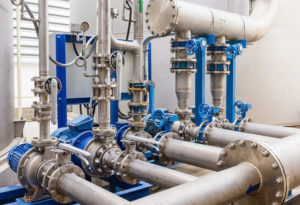 Water and wastewater are among the priorities for the bipartisan infrastructure package this year. After weeks of negotiations in the Senate, the bill would provide tens of billions for drinking and wastewater projects. Its timeline for passage in the House, though, remains unclear.
Water and wastewater are among the priorities for the bipartisan infrastructure package this year. After weeks of negotiations in the Senate, the bill would provide tens of billions for drinking and wastewater projects. Its timeline for passage in the House, though, remains unclear.
The deal’s biggest water provision is the $23.5 billion authorized to capitalize the state revolving funds for drinking and wastewater projects, split evenly.
It also includes $15 billion to deal with replacing lead pipes and another $10 billion for dealing with PFAS, the “forever chemical” that is showing up more frequently in water supplies. In addition, it also would authorize more than $8 billion for water projects in the West.
It also includes smaller provisions that may be of interest. There is an Advanced Drinking Water Technologies section authorized at $10 million annually between 2022 and 2026. It would provide grants for communities of 100,000 residents or less to ID and use “new or emerging, but proven to enhance the treatment, monitoring, affordability, efficiency, and safety of the drinking water provided.” It also would provide for a study of technologies to address cybersecurity of water systems as well as the quality and safety of water provided.
In addition to the bipartisan infrastructure project, the Democratic “human infrastructure” bill may also include some water-related items as it is being developed. The Senate’s Environment and Public Works Committee has $67 billion to allocate, a portion of which is expected to go toward clean water affordability and access as well as climate and research programs.
It is early in the legislative process, but we wanted to point these out to you in case you are interested in having them followed more closely as they move forward.
